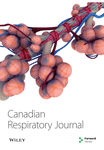Prophylactic Positive End-Expiratory Pressure and Postintubation Hemodynamics: An Interventional, Randomized Study
Abstract
OBJECTIVE: To investigate the hemodynamic and outcome effects of implementing prophylactic positive end-expiratory pressure (PEEP) versus zero end-expiratory pressure (ZEEP) in patients during the postintubation period in the emergency setting.
METHODS: The present study was a prospective, single-centre, interventional, single-blinded randomized trial performed in a 16-bed medical intensive care unit. The study cohort consisted of consecutive patients who urgently required intubation. During the postintubation period, patients received either 5 cmH2O PEEP or ZEEP. The primary aim was to assess the variation in mean arterial pressure (MAP) from baseline up to 90 min postintubation. The secondary aim was to determine the mean duration of intubation, level of MAP support after intubation and 28-day mortality.
RESULTS: Seventy-five consecutive patients with similar mean (± SD) baseline characteristics and preintubation MAP (76±18 mmHg in the ZEEP group and 78.5±23 mmHg in the PEEP group, P=Not significant [NS]) were studied. The final analysis was performed in 33 patients in the ZEEP group and 30 patients in the PEEP group. Regarding outcome measures following intubation, delta MAP (ie, the difference between the lowest MAP values from baseline) was not differentially affected in either group (P=NS); the mean durations of intubation were similar (ZEEP 9.2±8.5 days versus PEEP 9.2±8.8 days, P=NS); 28-day mortality was not discriminative (ZEEP 14 of 33, PEEP nine of 30; P=NS); and levels of MAP support after intubation were comparable between the two groups.
CONCLUSION: In the present trial, there was no evidence that implementing a prophylactic PEEP of 5 cmH2O adversely affects short-term hemodynamics or outcome in medical intensive care patients during the postintubation period.




